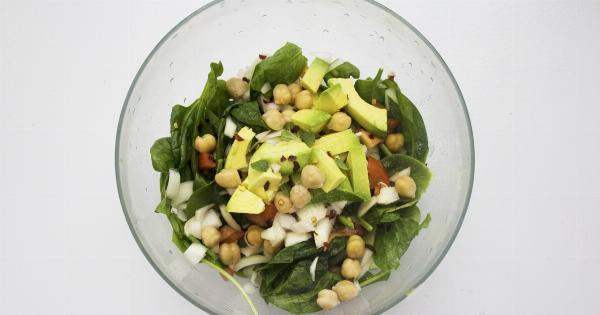When we think of eggs, we often picture them as being white or brown. However, eggs can come in a variety of colors, including blue, green, and even speckled. Similarly, eggs can range in size, from small to extra large.
But does the color or size of an egg have any impact on its nutritional value? Let’s delve into this topic and find out.
1. Egg Color: Myth vs. Reality
There is a common misconception that the color of the eggshell affects the nutritional content of the egg. For example, some people believe that brown eggs are superior to white eggs in terms of both taste and nutrition.
However, this notion is simply a myth.
The color of an egg is determined by the breed of the hen that laid it. Hens with white feathers and white earlobes typically lay white eggs, while hens with red feathers and red earlobes generally produce brown eggs.
The color of the eggshell does not impact the nutritional value of the egg inside.
2. Nutritional Composition of Eggs
Regardless of their color, eggs are considered a nutritional powerhouse. They are an excellent source of high-quality protein, vitamins, and minerals. Let’s take a closer look at the nutritional composition of eggs:.
– Protein: Eggs are one of the best sources of protein, containing all eight essential amino acids. A large egg typically provides around 6 grams of protein, making it a valuable choice for individuals looking to increase their protein intake.
– Vitamins: Eggs are rich in various vitamins, including vitamin A, vitamin D, vitamin E, and several B vitamins such as riboflavin, folate, and B12.
These vitamins play essential roles in maintaining the health of our skin, eyes, brain, and nervous system.
– Minerals: Eggs are a good source of important minerals like iron, phosphorus, and selenium. Iron is necessary for the production of red blood cells, while phosphorus supports bone health.
Selenium acts as an antioxidant and contributes to thyroid function.
3. Size Does Matter
When it comes to eggs, size matters mainly in terms of portion control and cooking convenience. The nutritional content per egg remains relatively constant, regardless of its size.
However, larger eggs do contain slightly more protein and fat compared to smaller eggs.
For instance, a large egg contains around 70 calories, while an extra-large egg contains approximately 80 calories.
The difference in caloric content is primarily due to the increase in protein and fat, which naturally occurs as the size of the egg increases.
4. Omega-3 Enriched Eggs
In recent years, there has been an emergence of specialty eggs, such as omega-3 enriched eggs. These eggs come from hens that have been fed a diet supplemented with omega-3 fatty acids, typically from flaxseeds or fish oil.
Omega-3 enriched eggs are believed to offer additional health benefits, as omega-3 fatty acids are known to support heart health and brain function. These eggs can be a good option for individuals who struggle to get enough omega-3s in their diet.
5. Brown vs. White Eggs: Which is Better?
In terms of nutritional value, there is no significant difference between brown and white eggs. The nutritional content is virtually identical regardless of the color of the shell.
When it comes to taste and texture, there may be subtle differences due to the diet and breed of the hens. However, these differences are subjective and vary from person to person.
Some may prefer the taste of brown eggs, while others may favor white eggs.
6. Eggshell Color and Hen’s Diet
While eggshell color does not affect the nutritional value of the egg, it can provide insights into the diet of the hen that laid it.
For instance, hens that are raised on pasture or fed a diet rich in certain nutrients may produce eggs with brighter yolks and stronger shells.
On the other hand, hens that are raised in conventional systems may produce eggs with paler yolks. This is because their diet may not contain as many nutrients or natural pigments that contribute to vibrant yolks.
7. Freshness and Safety
One crucial factor to consider when buying and consuming eggs is their freshness and safety. Fresh eggs are not only more flavorful but also safer to eat.
You can determine the freshness of an egg by performing a simple test. Place the egg in a bowl of water – if it sinks to the bottom and lays flat, it is very fresh.
If it stands upright on the bottom but is still submerged, it is less fresh but still good to eat. If it floats to the top, it is best to discard it, as it is no longer fresh.
8. Conclusion
In conclusion, the nutritional value of eggs remains consistent regardless of their color or size. Eggs are highly nutritious, providing a range of essential vitamins, minerals, and high-quality protein.
Whether you prefer white, brown, or even blue eggs, there is no wrong choice when it comes to nutrition.
So, next time you reach for that carton of eggs, remember that the color of the shell is simply a reflection of the hen’s breed, not the egg’s nutritional value.
Enjoy the incredible nutritional benefits of eggs, regardless of their color or size!.






























